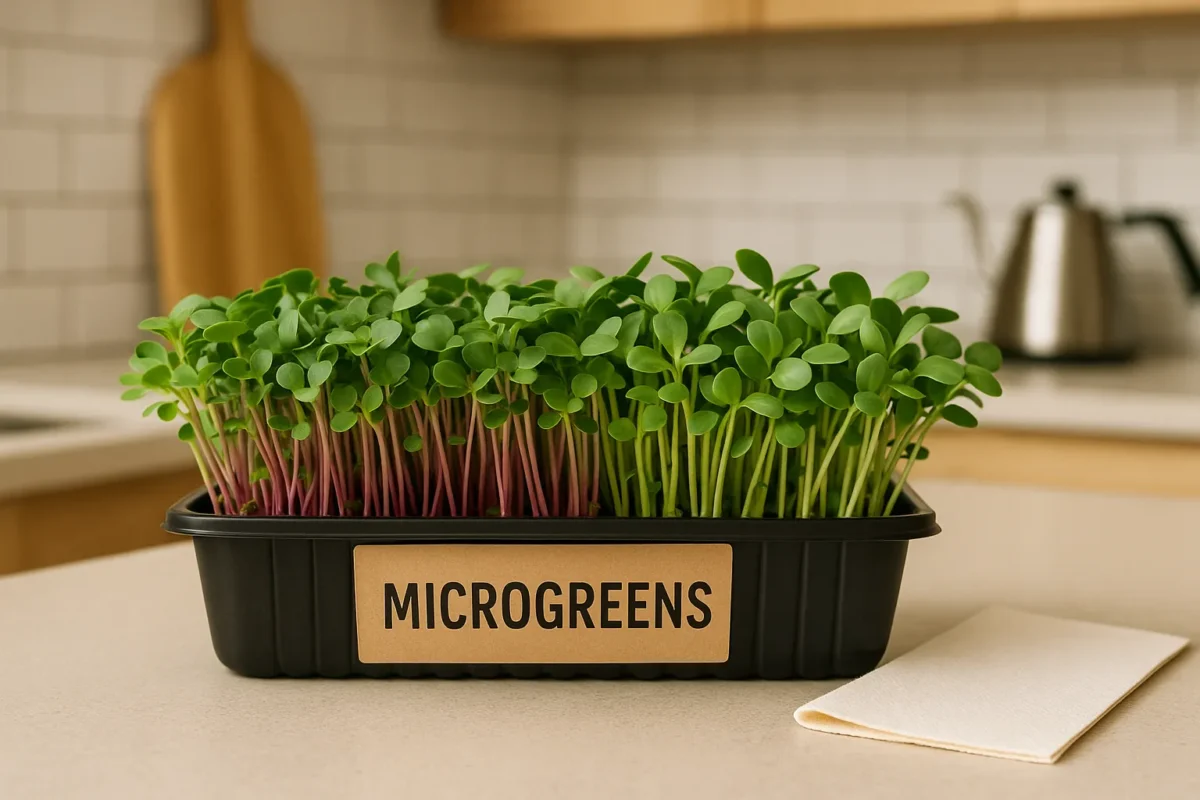
Introduction
Microgreens have exploded in popularity in recent years for their rich flavour, concentrated nutrition, and eye-catching appearance. But one common question among growers and consumers alike is: how long do microgreens last once harvested? Whether you’re growing them at home or buying from a local grower, understanding how to keep them fresh is essential to getting the most from your greens.
In this guide, we’ll look at the shelf life of different types of microgreens, the factors that affect their freshness, and proven storage methods that really work. By the end, you’ll know exactly how to store microgreens to preserve their taste, texture, and nutrients.
How Long Do Microgreens Typically Last?
General Shelf Life
When it comes to how long do microgreens last, most varieties will stay fresh for 5 to 10 days after harvest if stored correctly. Some hardier types, like sunflower or pea shoots, can last up to 14 days under optimal conditions, while more delicate greens such as amaranth or basil may only last 3 to 5 days.
Breakdown by Variety
- Broccoli, kale, cabbage, radish: 7–9 days
- Pea shoots, sunflower, beet: 10–14 days
- Cress, amaranth, basil, coriander: 3–6 days
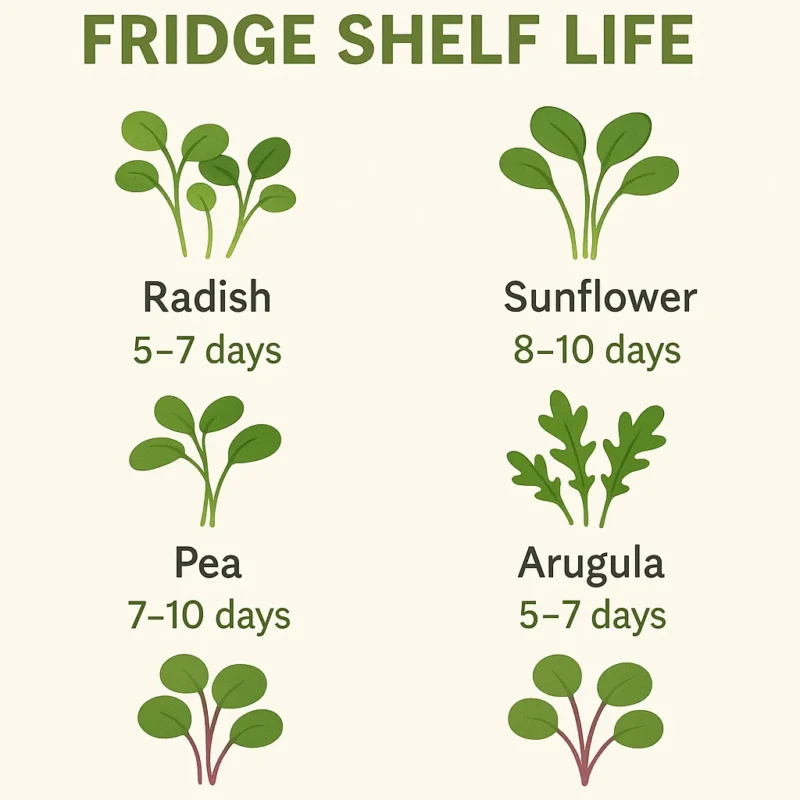
Freshness Indicators
You’ll know microgreens are starting to spoil when they:
- Smell sour or musty
- Appear slimy or waterlogged
- Begin yellowing or wilting
It’s always better to consume them as fresh as possible to enjoy the peak nutritional value and flavour.
What Factors Affect Microgreen Freshness?
Moisture
When asking how long do microgreens last, it’s important to understand that moisture is the number one cause of spoilage. Microgreens are highly sensitive to excess humidity, and even a few drops of trapped condensation in a container can quickly lead to mould or sliminess, drastically shortening their shelf life.
Airflow
Proper air circulation slows the build-up of humidity. Microgreens stored in completely sealed containers without airflow tend to spoil faster unless the moisture is strictly controlled.
Temperature
The ideal storage temperature is between 1°C and 5°C (fridge temperature). Temperatures above 7°C can speed up wilting, while freezing temperatures will damage cell walls and ruin texture.
Harvest Method
When considering how long do microgreens last, the way you harvest them plays a crucial role. If they are:
- Harvested dry (not freshly watered)
- Cut with clean, sharp scissors
- Handled gently
…they will store significantly longer than if they are harvested while damp or bruised.
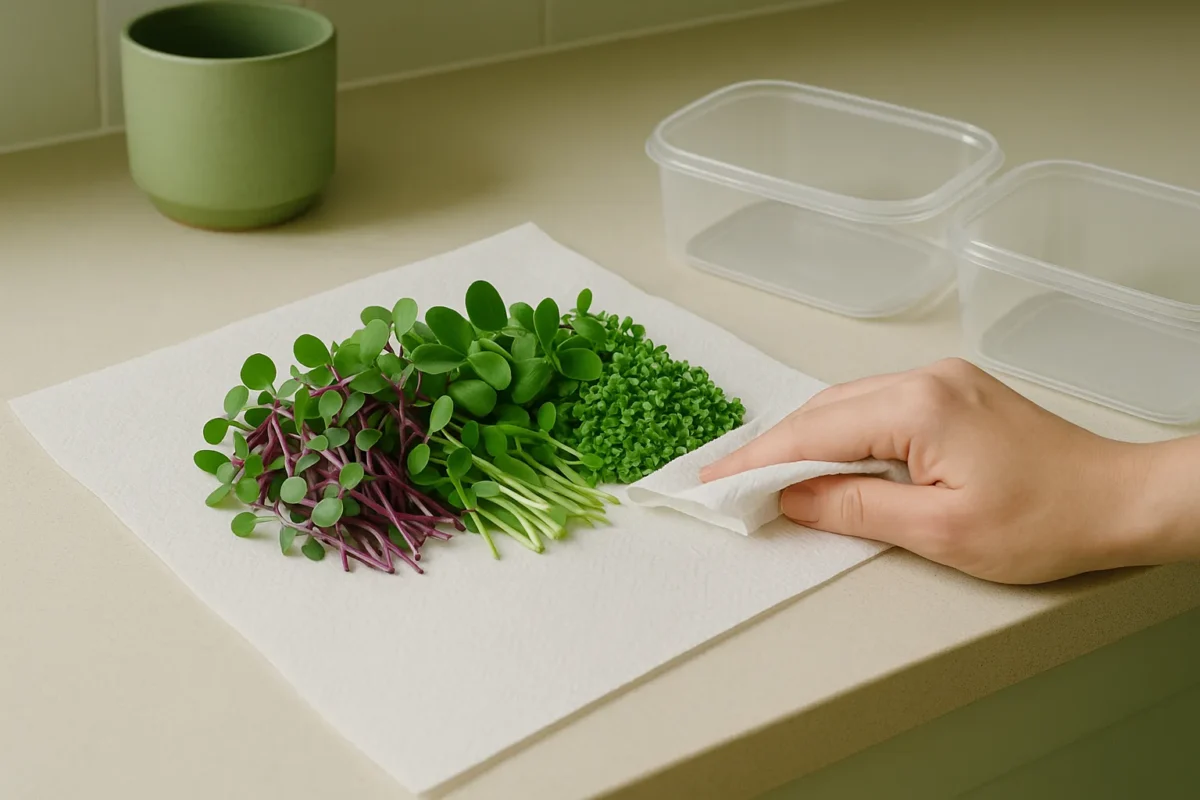
Proven Microgreen Storage Tips
The Paper Towel Method
One of the simplest and most effective storage methods:
- Line an airtight container with a dry paper towel.
- Place your microgreens gently inside.
- Cover with another paper towel on top.
- Seal the container and store in the fridge.
The paper towels absorb excess moisture and prevent spoilage.
Breathable Produce Bags
For anyone wondering how long do microgreens last when grown or sold in larger quantities, the type of packaging makes a big difference. Perforated produce bags are ideal, as they offer just enough ventilation to prevent moisture build-up while keeping the greens crisp and fresh for longer.
Resealable Salad Tubs
Repurposing store-bought salad tubs (e.g. the kind you get with supermarket spinach or rocket) also works well. Just make sure they are clean, dry, and lined with absorbent paper.
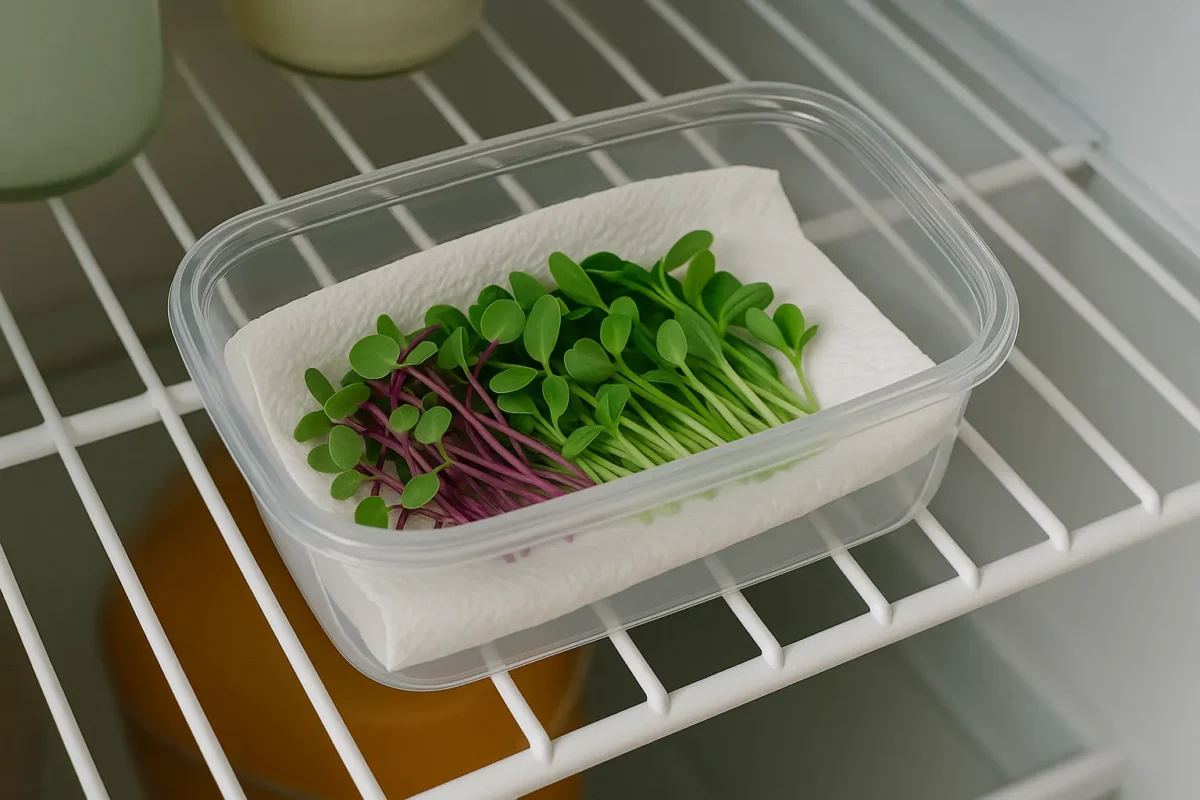
Tips for Extending Freshness
Don’t Wash Until Ready to Use
Always wash microgreens just before eating, not before storing. Washing adds moisture, and any leftover water can cause rapid spoilage.
Store Immediately After Harvest
Don’t let harvested greens sit at room temperature. The quicker they go from harvest to fridge, the longer they’ll last.
Check for Moisture Daily
Even with good storage, some moisture may collect. Change the paper towel or container if it becomes damp.
Avoid Stacking Heavy Items on Top
Store your microgreens on a top shelf in the fridge where there’s less risk of bruising or compression.
Can You Freeze Microgreens?
If you’re thinking about how long do microgreens last and whether freezing can extend their shelf life, it’s worth noting that freezing is generally not recommended. While technically possible, it destroys the delicate texture and leaves microgreens mushy. However, if you plan to use them in smoothies or cooked dishes, freezing can work as a last resort.
How to Freeze If Needed
If you must freeze:
- Blanch briefly in boiling water, then ice water
- Pat dry completely
- Freeze in a single layer before transferring to a freezer-safe bag
Just be aware that nutritional loss and flavour degradation can occur.
How to Tell If Microgreens Have Gone Bad
Visual Signs
- Slimy appearance
- Discolouration or browning
- Yellow or limp leaves
Smell
Spoiled greens often emit a sour or “wet compost” smell.
Taste
If they taste bitter, sour, or musty, don’t eat them.
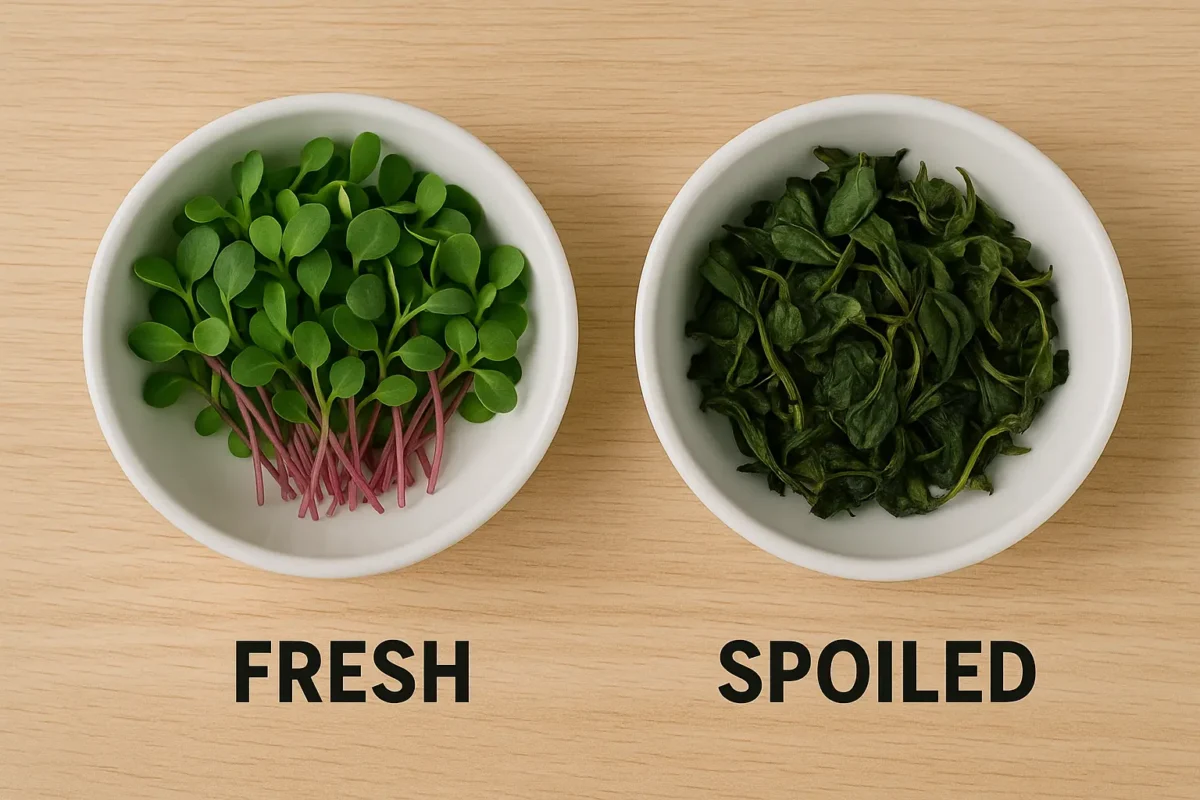
Final Thoughts
Microgreens are delicate but incredibly rewarding to grow and eat. Understanding how long do microgreens last and using the right storage methods can help extend their shelf life and reduce waste—whether you’re growing for your household or supplying a small business.
The key is to control moisture, store them cool and dry, and eat them fresh. By following the proven techniques outlined above, your microgreens will stay crisp, flavourful, and nutrient-rich for as long as possible.
Sources:
Royal Horticultural Society (RHS): Microgreens
Food Standards Agency: Safe Storage of Vegetables
University of Maryland Microgreens Research
USDA: Postharvest Technology for Microgreens
The Antioxidant Power of Microgreens: 5 Outstanding Health Benefits You Need to Know

